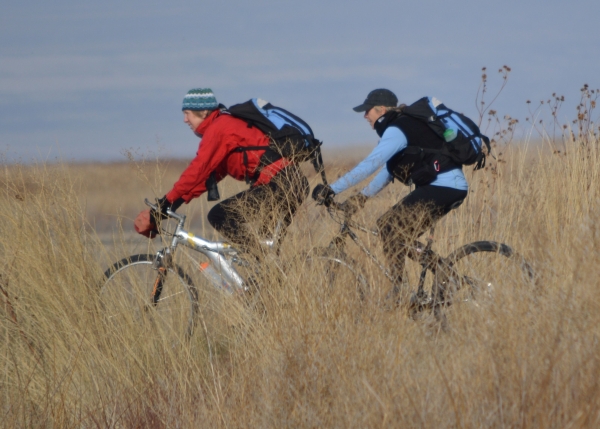
Biking is a good way to see wildlife, learn about habitats and photograph nature. At Malheur National Wildlife Refuge, bicycling is permitted on designated roads and trails as shown on the Refuge map and trails brochure. Use caution on the East Canal Road, it is shared with vehicular traffic. Yield to pedestrians; many Refuge routes are multi-use trails. E-bikes are permitted on any refuge roads and trails where traditional bicycle use is allowed.
When to Go
The greatest variety of waterfowl and songbirds can be found on the Refuge from late winter through the end of May, but something worth viewing is available at any time of the year. The abundance of species varies by the seasons, as you will see by the available Watchable Wildlife Brochure and the Refuge’s Average Early Arrival Dates for migratory species if you come in spring with particular species in mind. Spring is best for wildlife watching, not just because the birds are in fresh plumage and engaged in public display, but also because large flocks of some species make spectacular appearances in the newly wet meadows, which brings many species out in the open.
The auto tour route also offers a great all-season way to see wildlife and habitats from the comfort of your car. By using your car as a viewing blind, you can often see more wildlife than you can see on foot. The 42-mile self-guided Blitzen Valley Auto Tour Route showcases the scenic Blitzen Valley, from the Refuge headquarters south to the historic P Ranch. The auto tour route primarily follows the historic Center Patrol Road built by the Civilian Conservation Corps (CCC) through outstanding features of historical, geological, and biological interest. The diversity and abundance of wildlife you see will depend on the season, the time of day, your speed of travel, and your observation skills.
Trail Etiquette
- Dispose of all trash and animal waste in trash receptacles
- Pets must be kept on a leash
- Stay on the trail, and respect plants and wildlife
- Leave natural objects such as plants, animals, minerals, antlers, and objects of antiquity
- Yield to pedestrians; many Refuge routes are multi-use trails


